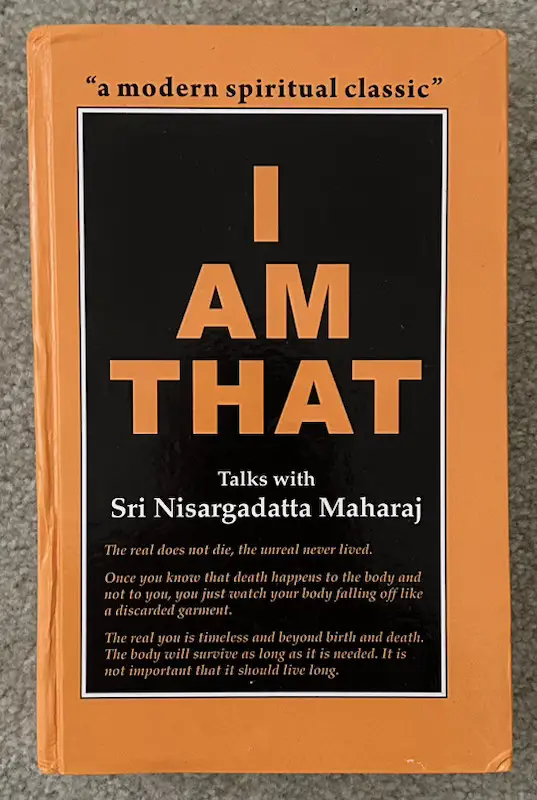I recently started reading the “spiritual classic” book, I Am That, by Nisargadatta Maharaj. The book is rated 4.8 stars on Amazon and 4.4 on Goodreads, so that’s pretty impressive.
After reading the first 100 pages or so, I’m glad to report personally that there isn’t anything significantly new here for me. Even though I never saw Ram Dass refer to Nisargadatta Maharaj, the words in this book are remarkably similar to those in Ram Dass’s best books, which I have already written about. That is, the words are a little different, but all of the concepts are the same, and they are consistent with what I know about meditation.

As I look at pages where I have highlighted text or underlined words, these are the most significant phrases I have seen:
- He makes a huge distinction between awareness and consciousness
- “Give up all questions except one, ‘Who am I?’” is the same as Zen Master Seung Sahn, and similar mantras exist
- “Most people live in the world of self-consciousness” is something I have written about before (this is in the Preface area)
- “I am detached and see the passing show as a passing show, while you stick to things and move along with them.”
- “Yes, there is something that may be called the memory body, or causal body.”
- “When the mind is quiet, we come to know ourselves as the pure witness.” (Ram Dass talked about The Witness many times.)
- “All are One and the One is all.”
- “Yes, I appear to hear and see and talk and act, but to me it just happens, as to you digestion or perspiration happens.”
- “I am aware of being asleep.”
- “Awareness is primordial.”
- “To me it is ‘a body,’ not ‘my body.’”
- “Save all your energies and time for breaking the wall your mind has built around you.”
Some of these things are stated multiple times in different ways, so I’m not sharing that repetition. There are also several terrific paragraphs and passages, and I don’t want to share those in their entirety.
And of course there are those quotes on the front cover of the book:
- “The real does not die, the unreal never lived.”
- “Once you know that death happens to the body and not to you, you just watch your body falling off like a discarded garment.”
- “The real you is timeless and beyond birth and death. The body will survive as long as it is needed. It is not important that it should live long.”
Other unrelated teachers such as Ram Dass and Zen Master Seung Sahn have stated similar things, so again, that’s cool to see from someone else.
I’ll also add more quotes here as I read more of the book, but for now, it’s off to a great start.
Update
As a brief update, after getting to almost 300 pages of this book, it’s much more like Zen than what Ram Dass spoke about regarding Maharaj-ji and other Indian/Hindu saints. It’s like Nisargadatta Maharaj took a different path than Maharaj-ji (Neem Karoli Baba), and even refused to go down that path. His “Who Am I?” mantra is much more like someone like Zen Master Seung Sahn and his “What Am I?” mantra.




